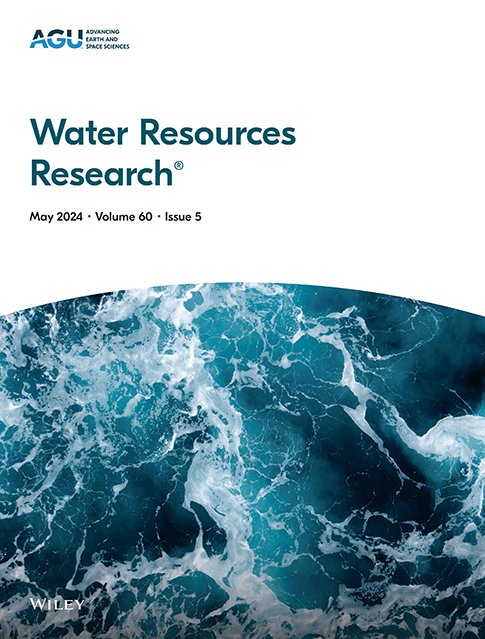全球水文模型的多分辨率深度学习代理框架
IF 4.6
1区 地球科学
Q2 ENVIRONMENTAL SCIENCES
引用次数: 0
摘要
全球水文模型是当今缺水世界中重要的决策支持工具,因为其基于过程的性质允许在各种气候变化和社会经济情景下进行全球水资源评估。尽管不断努力改进水资源评估,但全球水文模型计算需求急剧增加,校准它们已证明是困难的。为了解决这些问题,深度学习方法在水文界获得了突出地位,特别是深度学习替代品的发展。然而,深度学习全球水文模型替代品的发展仍然有限,因为大多数替代框架只关注单一空间分辨率下的自然水状态和通量。因此,我们引入了一个全球水文模型替代框架,该框架集成了空间分布的径流路径,包括湖泊流出和水库运行,包括人类活动,如水提取,并可以跨空间分辨率进行缩放。为了测试我们的框架,我们为praster全球水平衡(PCR-GLOBWB)全球水文模型开发了一个深度学习代理。与模型输出相比,我们的代理表现良好,克林-古普塔效率中位数为0.50,而预测速度至少快了一个数量级。此外,多分辨率代理的表现与几个单分辨率代理相似,表明代理的广泛空间适用性与其性能之间的权衡有限。模型替代是全球水文建模界的一个很有前途的工具,因为它们在减少计算需求和加强校准方面具有潜在的好处。因此,我们的框架为社区创建自己的多尺度深度学习全球水文模型替代品提供了良好的基础。本文章由计算机程序翻译,如有差异,请以英文原文为准。
A Multi-Resolution Deep-Learning Surrogate Framework for Global Hydrological Models
Global hydrological models are important decision support tools for policy making in today's water-scarce world as their process-based nature allows for worldwide water resources assessments under various climate-change and socio-economic scenarios. Although efforts are continuously being made to improve water resource assessments, global hydrological model computational demands have dramatically increased and calibrating them has proven difficult. To address these issues, deep-learning approaches have gained prominence in the hydrological community, in particular the development of deep-learning surrogates. Nevertheless, the development of deep-learning global hydrological model surrogates remains limited, as most surrogate frameworks only focus on natural water states and fluxes at a single spatial resolution. Therefore, we introduce a global hydrological model surrogate framework that integrates spatially distributed runoff routing, including lake outflow and reservoir operation, includes human activities, such as water abstractions, and can scale across spatial resolutions. To test our framework, we develop a deep-learning surrogate for the PCRaster Global Water Balance (PCR-GLOBWB) global hydrological model. Our surrogate performed well when compared to the model outputs, with a median Kling-Gupta Efficiency of 0.50, while predictions were at least an order of magnitude faster. Moreover, the multi-resolution surrogate performed similarly to several single-resolution surrogates, indicating limited trade-offs between the surrogate's broad spatial applicability and its performance. Model surrogates are a promising tool for the global hydrological modeling community, given their potential benefits in reducing computational demands and enhancing calibration. Accordingly, our framework provides an excellent foundation for the community to create their own multi-scale deep-learning global hydrological model surrogates.
求助全文
通过发布文献求助,成功后即可免费获取论文全文。
去求助
来源期刊

Water Resources Research
环境科学-湖沼学
CiteScore
8.80
自引率
13.00%
发文量
599
审稿时长
3.5 months
期刊介绍:
Water Resources Research (WRR) is an interdisciplinary journal that focuses on hydrology and water resources. It publishes original research in the natural and social sciences of water. It emphasizes the role of water in the Earth system, including physical, chemical, biological, and ecological processes in water resources research and management, including social, policy, and public health implications. It encompasses observational, experimental, theoretical, analytical, numerical, and data-driven approaches that advance the science of water and its management. Submissions are evaluated for their novelty, accuracy, significance, and broader implications of the findings.
 求助内容:
求助内容: 应助结果提醒方式:
应助结果提醒方式:


